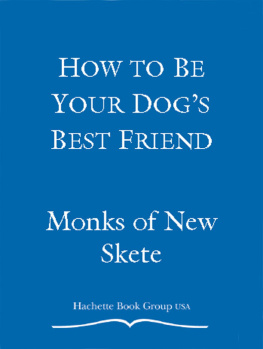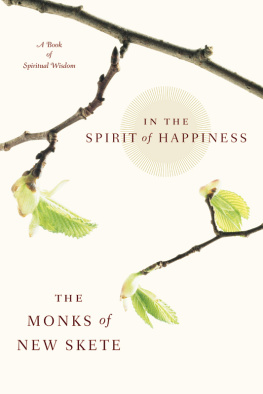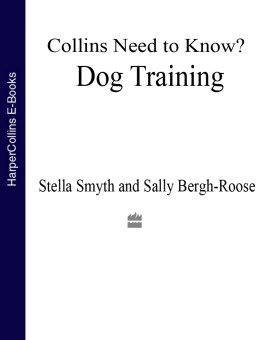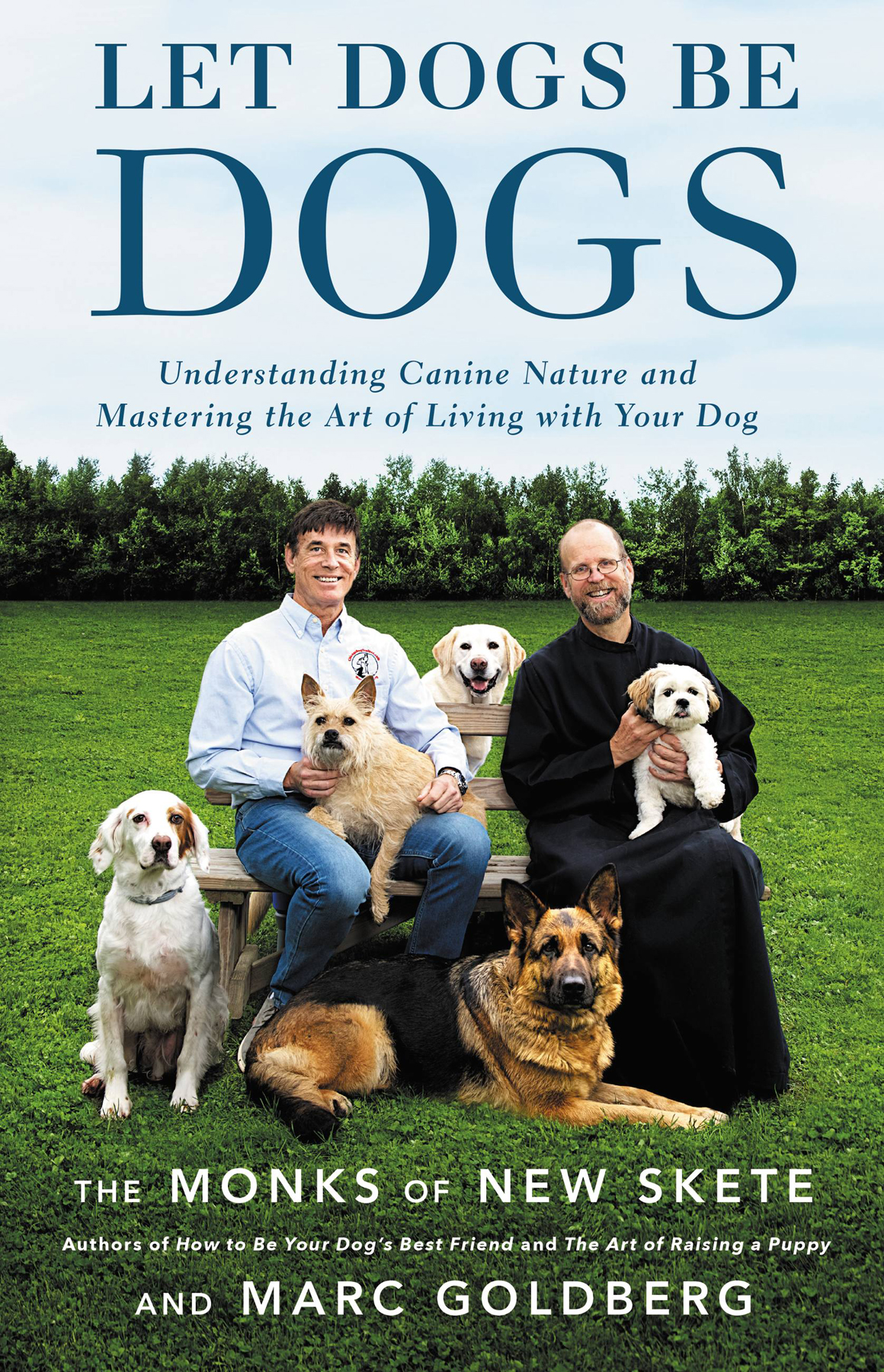There is a corollary between our second training book, The Art of Raising a Puppy, and Let Dogs Be Dogs. The idea for the puppy book came to me eleven years after our first book was published. Id been at New Skete for about six years and had begun to see the same things over and over: adolescent canines that were undersocialized and ill-adjusted. I also became aware that there wasnt a comprehensive puppy manual to guide new owners. With our experience raising puppies, I thought we could help. I remember being out driving with the abbot, Father Laurence, and saying, Theres a new book and heres what it is. And he simply replied, Fine, you write it.
Now, twenty-three years later, Ive found myself experiencing feelings similar to those I had leading up to the puppy book.
In the intervening years, Id turned toward writing that was more spiritual. As I look back, I realize that I needed to fully mine this spiritual vein for this new project to happen. One way to describe this book is that its a training guide wrapped in a spiritual philosophy.
The next step in the journey toward this project was attending Marc Goldbergs workshop. Quite frankly, his work with dogs took my breath away. He and I began to collaborate then on myriad dog-training projects. Marc, who is based in Chicago, came east to the monastery frequently. His outsized personalityand mastery with dogsingratiated him with my fellow monks.
Soon, we began to fashion an outline for a weekend dog-training seminar at New Skete that would focus on the art of living with a dog. Within twenty-four hours of announcing the workshop to a select list of dog owners and dog professionals, every available ticket was sold. The demand was so great that we needed to add another workshop just to handle the overflow. It was at this point that I knew we needed to write a book that would speak directly and effectively to the problems todays dog owners experience. Marc was thinking the same thing, and as we went back and forth together on ever-deepening levels, what began to take shape was a different kind of training book. It would be less concerned with the technical step-by-step instructions characteristic of most dog-training manuals, more foundational in nature, a book that would provide the key to a relationship with a dog regardless of the particular training approach one followed. We envisioned a book that would take into account the real needs of the dog based on its nature and that would then show readers how to use that information to radically improve their dogs behavior. We also believed we could help many people deepen their relationships with their dogs so they could enjoy the friendship more. We could feel something magical occurring.
With Marc, I share a common view about the state of the dog-human relationship, and the overwhelming need for a new way of seeing it. Cumulatively, weve trained tens of thousands of dogs. Marc is a celebrated trainer with thirty years of experience, a past president of the International Association of Canine Professionals (IACP) and inductee into its Members Hall of Fame, and a talented contributor to many canine journals. We know you will be just as thrilled as we are that Marc has joined us to write this book. He brings a fresh voice, an enormous insight into dogs, and some of the best training methods weve ever come across.
Blessings to you in your life with your dog(s).
Brother Christopher, Prior, Monks of New Skete
Like so many of you, I read the Monks of New Sketes books and was fascinated with the backstory of monks who breed and train dogs. Their work with dogs was and is so wonderfully sensible, especially in a world where common sense in dog training and dog care is far from common. Yet I never expected to meet the men behind those books.
That changed nearly ten years ago when the Monks of New Skete were inducted into the International Hall of Fame organized by the International Association of Canine Professionals. Brother Christopher traveled to the IACP conference to accept the award, an honor conferred upon such notables as Captain Max von Stephanitz, who originated the German shepherd breed, and Konrad Lorenz, an Austrian ethologist who wrote extensively about dogs and won a Nobel Prize in 1973.
I found it remarkable that this bestselling author, whose books I had devoured, was not only a modest man but also deeply interested in meeting and exchanging ideas with his fellow canine professionals. It was in those first meetings that our friendship began.
The idea to write a book together, however, never would have formulated had I not later seen a television series called Divine Canine. The show featured the monks, primarily Brother Christopher, working with interesting clients and their somewhat spoiled dogs. What really struck me while watching Brother Chris work was how similar his movements were to my own. It truly seemed as though I were watching myself train dogs. I knew then that we shared the same dog-training philosophies. Not long after, Brother Christopher and I began a series of conversations about ways to improve our training, especially taking the needs of todays clients and their dogs into account.
The dog universe has changed enormously in the past twenty years, and Brother Christopher and I both believed that we had an important message for todays dog owner, a philosophy that could help both dog lovers and, just as important, dogs be happier. So we brainstormed, we talked, and we outlined.
About that time, I spent a week visiting New Skete and had the chance to help Brother Christopher work with some of the dogs he was training. It was an ideal opportunity to collaborate, to exchange ideas, and simply to get to know each other better. I remember one of the dogs we trained that week was an energetic golden retriever named Annie that was owned by a retired couple. The couple loved Annie dearly, but had brought her to New Skete because she was proving too wild for them, constantly pulling and jumping. They needed help.










